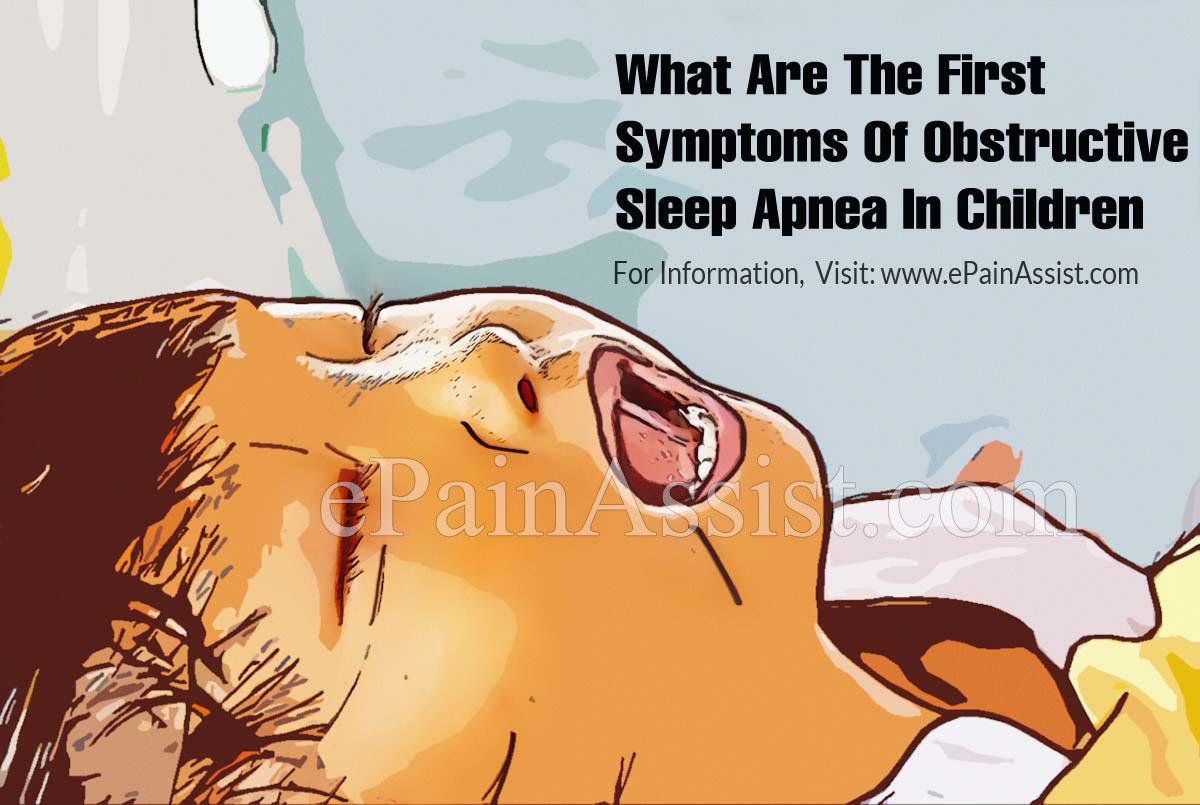Obstructive sleep apnea in children, commonly known as pediatric sleep apnea is a sleep disorder represented by frequent awakenings or restlessness in the sleep. It usually occurs when the upper airways are blocked or become narrower during the sleep of the child generally at night. Its causes involve enlargement of the tonsils or adenoids, premature birth, structural abnormalities of the face or skull, and many more. It usually affects children at the age of 2-8 years.

What Are The First Symptoms Of Obstructive Sleep Apnea In Children?
Obstructive sleep apnea in children is a sleep disorder marked by frequent pauses in the child’s breathing during sleep. It affects children age 2- 8 years. Two types of sleep apnea appear in children, one is obstructive sleep apnea, and the other is central sleep apnea. Obstructive sleep apnea appears due to blockage in the throat or nose.
Central sleep apnea is caused due to improper functioning of the brain part responsible for breathing.(4)
During sleep, the first signs and symptoms of obstructive sleep apnea in children are:
Snoring– it is not always seen in all Infants and young children with pediatric sleep apnea. The child may exhibit disturbed sleep.
Pauses In Breathing- sleep apnea may show frequent pauses during breathing.
Restless Sleep- the child may have disturbed sleep at night and even during the daytime.(1) He may also show frequent awakening from sleep.(3)
Coughing Or Choking– they are some of the first symptoms of Obstructive sleep apnea in children.
Mouth Breathing- due to blockage in upper airways, the child may breathe through the mouth
Bedwetting– in this disorder, enuresis or bedwetting is a common symptom when the child has a restless sleep.
Excessive Daytime Sleepiness- the child sleeps excessively in the day
Sleep Terrors- the child may also have sleep terrors.(1)
Other symptoms that comprise of behavioral or cognitive problems in the child observed in the daytime include-
- Poor Performance In school
- difficulty in paying attention to
- learning problems
- behavioral problems
- poor weight gain – this happens due to reduced production of growth hormone(3)
How Do You Test For Obstructive Sleep Apnea In Children?
To diagnose obstructive sleep apnea in children, the doctor will evaluate the symptoms of the child, his medical history, and perform a physical examination of the child. He will advise ordering several tests to diagnose the disorder.(2) These tests involve:
Oximetry- oximetry is a test done to measure the oxygen levels during sleep. It is advised when doctors have a substantial doubt of obstructive sleep apnea, and a full polysomnogram is not required. An overnight recording of oxygen levels is suggested to establish the diagnosis. Oximetry can be performed at home. However, if it fails to confirm the diagnosis, a polysomnogram is recommended.(2)
Polysomnogram- It is a test used to evaluate sleep disorders. Doctors use this test to assess the Obstructive sleep apnea in the child through an overnight sleep study. In this test, special sensors are attached to the body to monitor and record the activity of brain waves, snoring, breathing patterns, oxygen levels, heart rate, and muscle activity during the sleep cycles of the child.(2)
Electrocardiogram– Electrocardiogram is often used to detect any risk of an underlying condition related to the heart. For this, electrodes are attached to the chest of the child to measure the electrical conductivity of the heart.(2)
Conclusion
The first symptoms of obstructive sleep apnea involve snoring, interrupted breathing problems, nightmares, bedwetting, and others discussed above. It can be detected by tests polysomnogram, oximetry, and electrocardiogram after clinical evaluation of the case through personal history, medical history, and physical examination of the child.
- https://www.mayoclinic.org/diseases-conditions/pediatric-sleep-apnea/symptoms-causes/syc-20376196
- https://www.mayoclinic.org/diseases-conditions/pediatric-sleep-apnea/diagnosis-treatment/drc-20376199
- https://www.verywellhealth.com/symptoms-of-sleep-apnea-in-children-2632370
- https://www.healthline.com/health/sleep-apnea-in-children
Also Read:
- How Long Will It Take To Recover From Obstructive Sleep Apnea In Children & How Long Does The Symptoms Last?
- What Are The Ways To Prevent Obstructive Sleep Apnea In Children & Does It Reoccur?
- Home Remedies For Obstructive Sleep Apnea In Children
- How To Diagnose Obstructive Sleep Apnea In Children & What Is The Best Medicine For It?
- Is There A Surgery For Obstructive Sleep Apnea In Children?
- Coping Methods For Obstructive Sleep Apnea In Children
- What Leads To Obstructive Sleep Apnea In Children & Can It Be Cured?
